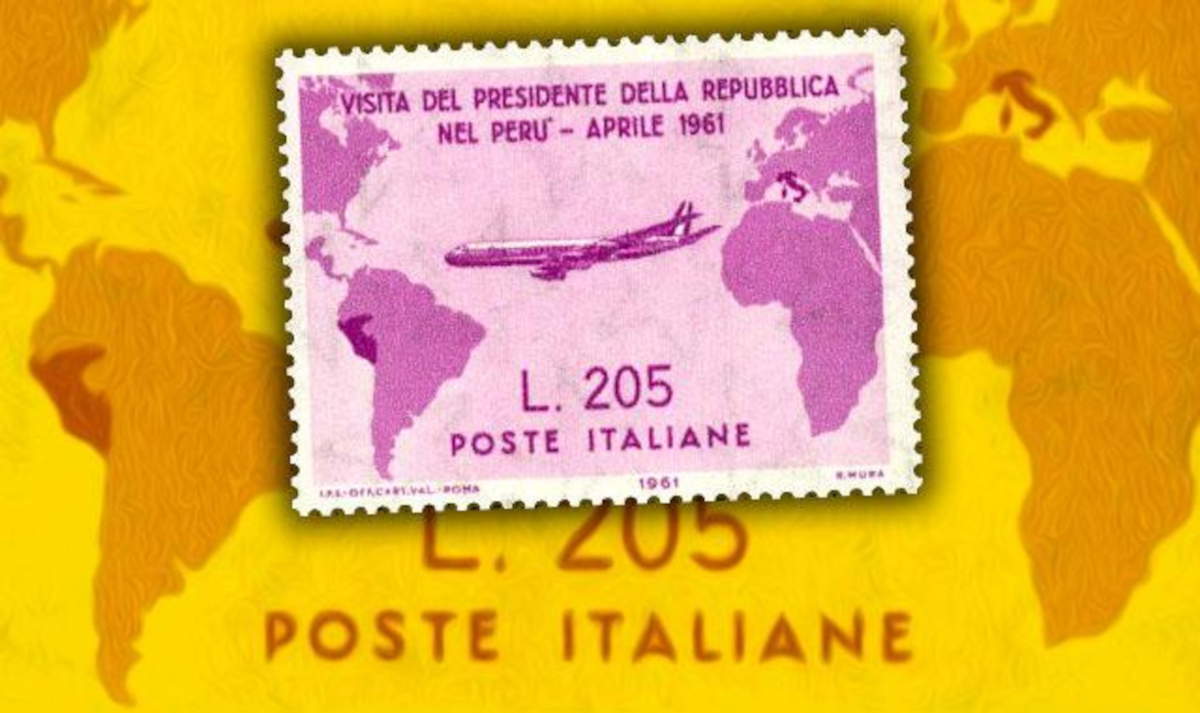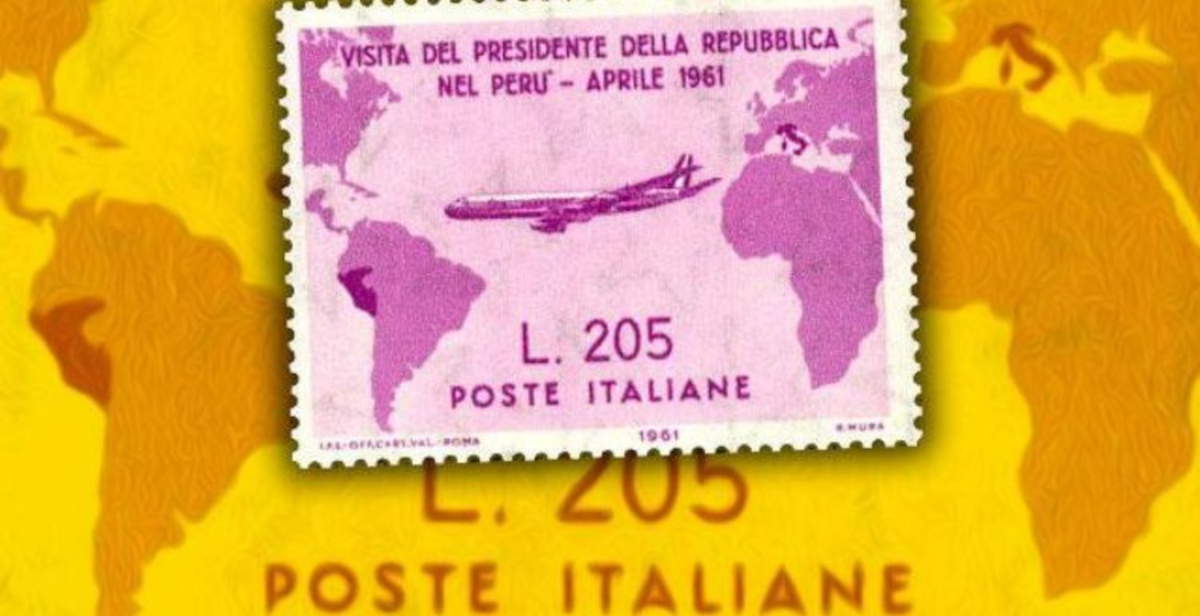In the panorama of Italian philately, stamp collecting, there is a representative case in which an error led to the birth of one of the most sought-after collectibles. This is the Gronchi rosa, a postage stamp issued by the Italian postal service on April 3, 1961, and withdrawn almost immediately from circulation because of a graphic error concerning the geographical map of Peru. In fact, the episode, which became known early on, managed to turn an official postal issue into a cult object for collectors.
The stamp in question was part of a commemorative series of three, printed on the occasion of the diplomatic trip to South America by President of the Republic Giovanni Gronchi (Pontedera, 1887 - Rome, 1978). The initiative, in addition to commemorating the first official trip of an Italian head of state to the South American continent, was intended to strengthen diplomatic relations with three countries in particular: Argentina, Uruguay and Peru. Each of the three stamps was dedicated to one of these states and featured a simplified cartographic representation of it.
The face value of the stamps varied according to destination: the 170-liter one was dedicated to Argentina, the 185-liter one to Uruguay, and the third, 205-liter, represented Peru. It was precisely on the latter that attention was focused because of an error in the depiction of the geographical boundaries. The illustration of the map had been made by illustrator Renato Mura, who based it on an atlas published by De Agostini, but in 1939, and therefore outdated. But what happened? Well, in that cartographic document the borders of Peru did not take into account the territorial changes that took place after the war with Ecuador between 1941 and 1942, when the South American country had expanded its territory, particularly in the area of the Amazon basin.

The mishap was noticed soon after the stamp was released for distribution. The Peruvian ambassador to Italy, noting the error, officially protested, urging the Italian authorities to intervene. The reaction of the government and the post office was swift: the distribution of the stamp was immediately suspended by Postal Minister Lorenzo Spallino, and between April 3 and 4 operations were launched to withdraw all the copies already distributed to post offices and users. At the same time, the Istituto Poligrafico dello Stato prepared a new version of the 205-liter stamp, in gray color, with the geographical map updated to the current borders of Peru renamed Gronchi grigio.
Despite recovery operations, some of the quantity initially distributed escaped collection. The most reliable estimates speak of some 79,455 examples of the pink Gronchi (with its distinctive color) that managed to circulate, being purchased by ordinary citizens or collectors. Some even ended up on envelopes already stamped and mailed before the distribution freeze. For this very reason, not all of the collected specimens were actually recovered.
Over the years, the rarity of the stamp and the circumstances surrounding its issuance have fueled the interest of philatelic enthusiasts. The Pink Gronchi thus became a symbol for Italian and international collecting. Its price has varied over time, but it continues to hold considerable value. Currently, a new specimen of the stamp, never used and in good condition, has a market value of around 1,000 euros. Even stamps without gum, that is, without the back glue due to time or use, retain some value, estimated at around 500 euros. Rarer, and consequently much more valuable, is the version of the Pink Gronchi actually used to frank a letter and regularly stamped by the postal service before official blocking. Specimens of this type are considered among the most coveted, and valuations can reach as high as 30,000 euros, depending on the state of preservation and documentation attesting to its authenticity.
The case of the Gronchi rosa, the only stamp officially cancelled by the Italian public administration and the only one to which Poste Italiane applied a second cover stamp, thus represent, more than sixty years later, a model episode in the panorama of Italian postal history for two main reasons: on the one hand, the economic value achieved by the specimen, and on the other hand, the political, diplomatic and operational consequences that ensued. The cartographic error, which originated from an obsolete source and escaped control, led to the immediate mobilization of institutions and made it clear how philatelic issues could have repercussions far beyond the mere collecting sphere.
 |
| The case of the pink Gronchi: how a mistake turned a stamp into a collector's item |
Warning: the translation into English of the original Italian article was created using automatic tools. We undertake to review all articles, but we do not guarantee the total absence of inaccuracies in the translation due to the program. You can find the original by clicking on the ITA button. If you find any mistake,please contact us.